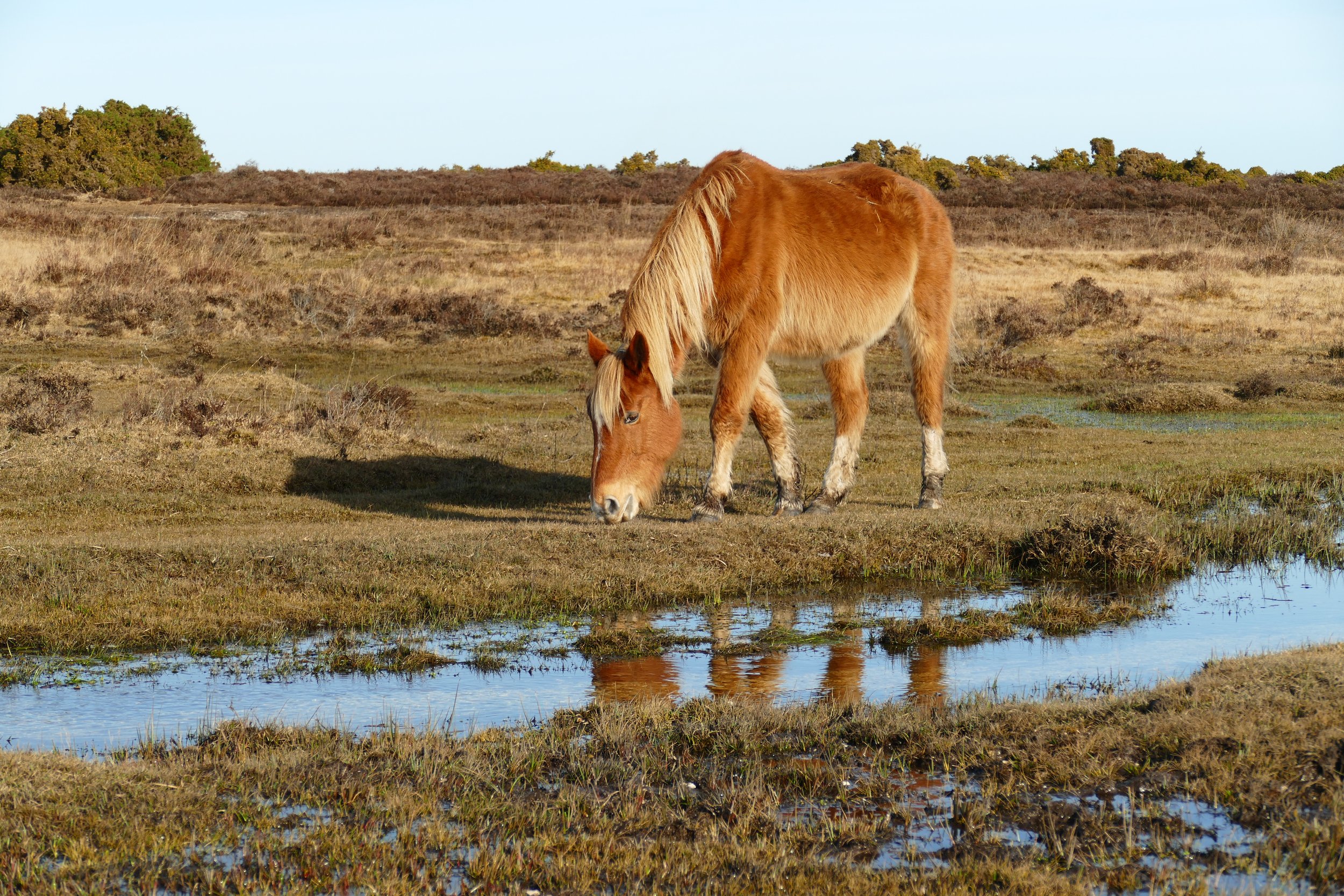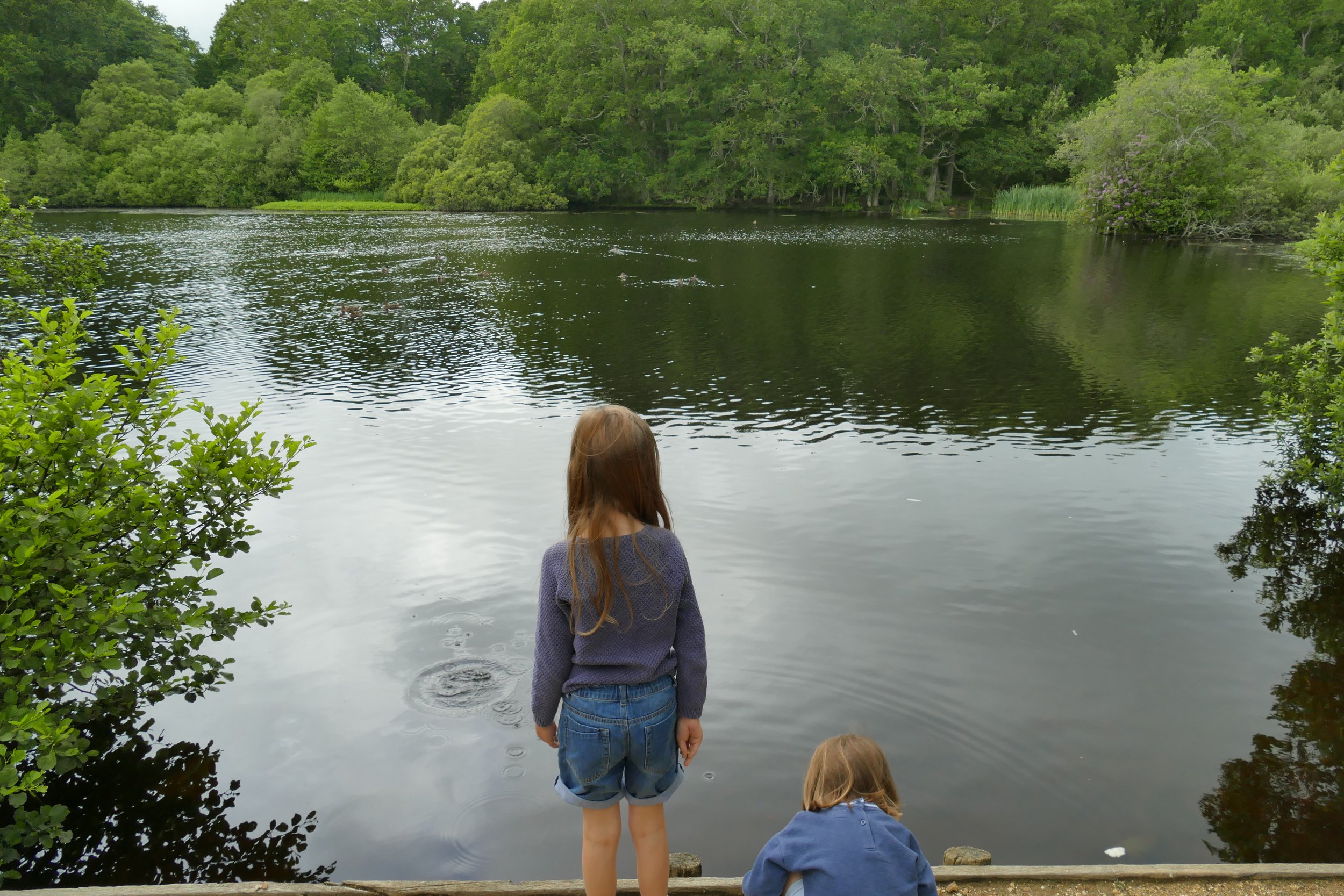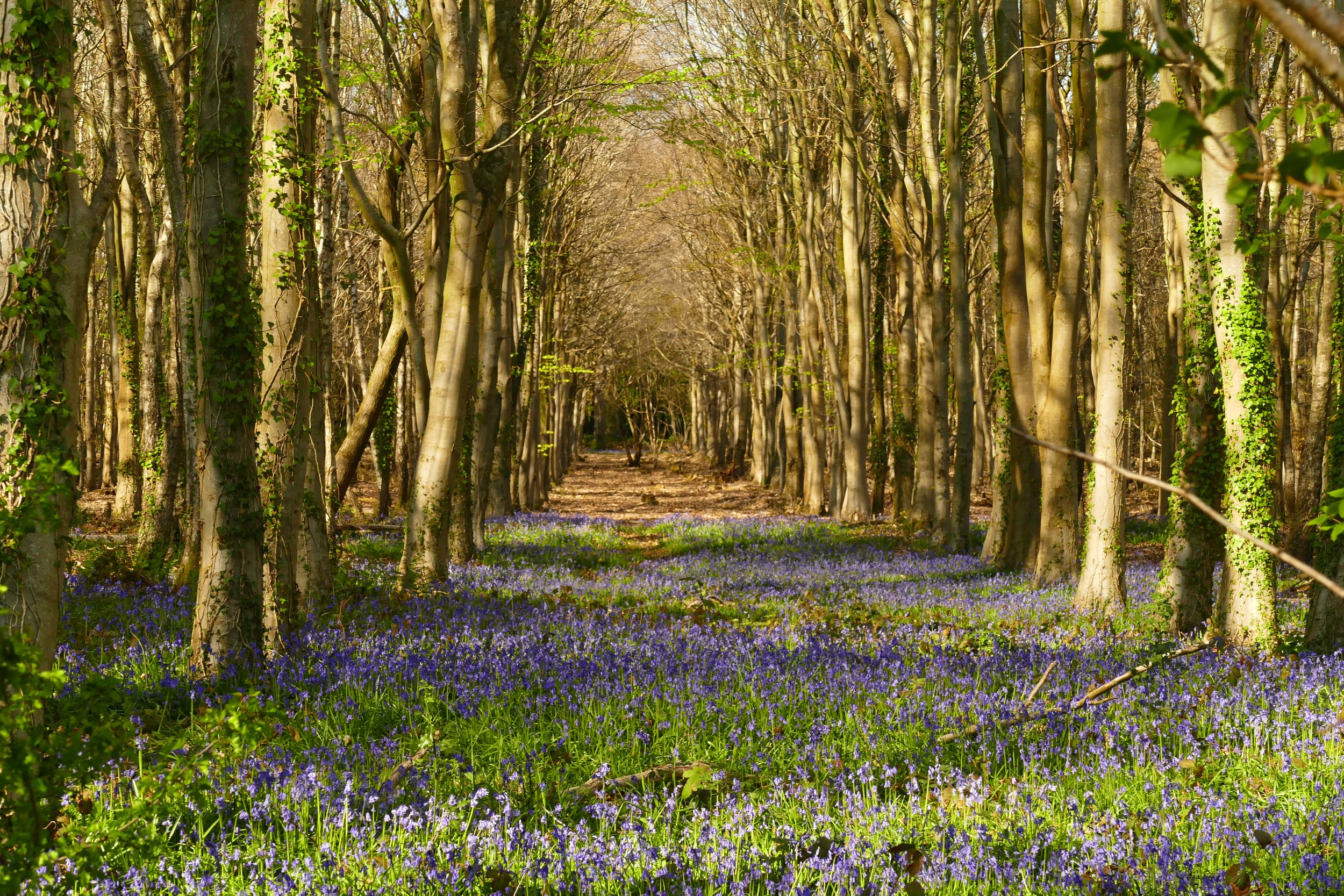Hatchet Pond
Beaulieu
Children will enjoy the ponies and waterfowl that gather to drink and feed at the pond on this walk.
Ponies, donkeys and cows gather at the pond to drink
The Basics
Time: 1 hour 40 mins
Distance: 5.1 km
Terrain: Heathland that can be wet and boggy in winter, two road crossings
Pushchair: No
Dogs: Expect to see free roaming ponies and cattle and dogs must not enter the water
Refreshments: There is sometimes an ice-cream van at the car park or Beaulieu is a very short drive away where there are plenty of options such as The Beaulieu Bakehouse
Toilets: None
Public Transport: Morebus service 112 from Hythe to Lymington stops at Furzey Lane Junction, where you can walk to the pond and start this walk
Parking: Ran’s Wood car park at the end of Furzey Lane - free, or if this is full, park at the larger Hatchet Pond car park, also free (Postcode: SO42 7WB - W3W: passively/barbarian/enrolling)
In the summer, these grassy banks make a good place for a picnic stop
Cross the heathland, that is covered in purple heather and yellow gorse through summer towards the serene and ecologically important, Hatchet Pond. There your will be sure to find free roaming ponies taking a drink in the clear water from the grassy banks, as well as a host of birdlife.
The Route
Go around the wooden barrier onto the gravelled cycle path out of the small parking area. Continue until you will see a five-bar gate ahead. Do not go through the gate, but turn left here instead, crossing over the stream on the grassy ‘bridge’. If you want a brief diversion at this point, then just to the right of the gate is a nice peaceful stream with a stone beach where our children enjoyed playing.
Follow the path across the heath, with the fence and woodland of Hawkhill Inclosure directly to your right. Continue in this manner until you get close to the road. Just before the road, you will reach the corner of the enclosed woodland and will see a little pond to your right. Continue up to the road and cross it with care.
On the opposite side of the road, you should find yourself in a clump of tall trees. Turn left to the end of the trees and then walk along the heath, parallel to the road. Head towards the tumulus (an ancient mound) ahead of you. This is recognisable as a mound covered in gorse bushes. After the tumulus, the next ancient landmark that you should aim for is a barrow (ancient earthworks) that appears as a long raised mound leading south from the road. Turn right at the barrow and follow the path running alongside it. The raised earth covered in gorse and heather will be to your left and the open heath to your right.
The path will get wetter as you near the streams that feed into the pond. When you meet a criss-crossing of sandy paths in a marshy area, look to the left and you will see the western end of Hatchet Pond. You can either go left here and walk along the northern shore of the pond, or go straight on and then turn left to follow the path around the pond on the southern shore. Either way, your aim is to get to the car park at the eastern end of the pond where the B3054 and the B3055 roads meet.
The pond is an incredibly beautiful place to view wildlife, but nobody, or their dogs, should enter the water. Hatchet Pond is one of the most important lowland water habitats in England and therefore it has a high conservation status. You will find benches and spaces to picnic near the car park and there are usually ponies and birds gathering here.
When you reach Hatchet Pond car park, head north, exit the car park and cross the road. You will see the entrance to Furzey Lane, the route you took to get to Rans Wood. Walk up the quiet lane, passing the houses of Furzey Lodge, to return to the car park.
If you don’t fancy doing our full walk from Ran’s Wood, you could park at the pond and do simple loop around the circumference of the water, taking about 30 minutes to complete.
Did you know?
Hatchet Pond is The New Forest’s largest body of freshwater and is home to rare wetland plants and animals that can no longer be found in other parts of the UK. Over use of this popular area is resulting in damage to this precious ecosystem. The park authority is trying to reverse the damage caused by pollution and erosion of the banks and they ask that no humans or dogs enter the water anymore for any reason.
If you enjoyed this walk…
…why not try another New Forest walk with a pond - Eyeworth Pond at Fritham
We are passionate about keeping The Ambling Path as a free resource available to everyone, forever. If you have enjoyed using our walking guides, then please consider leaving us a donation. This will help to cover our costs as well as rewarding the considerable time and effort needed to maintain the site. Thank you.





























